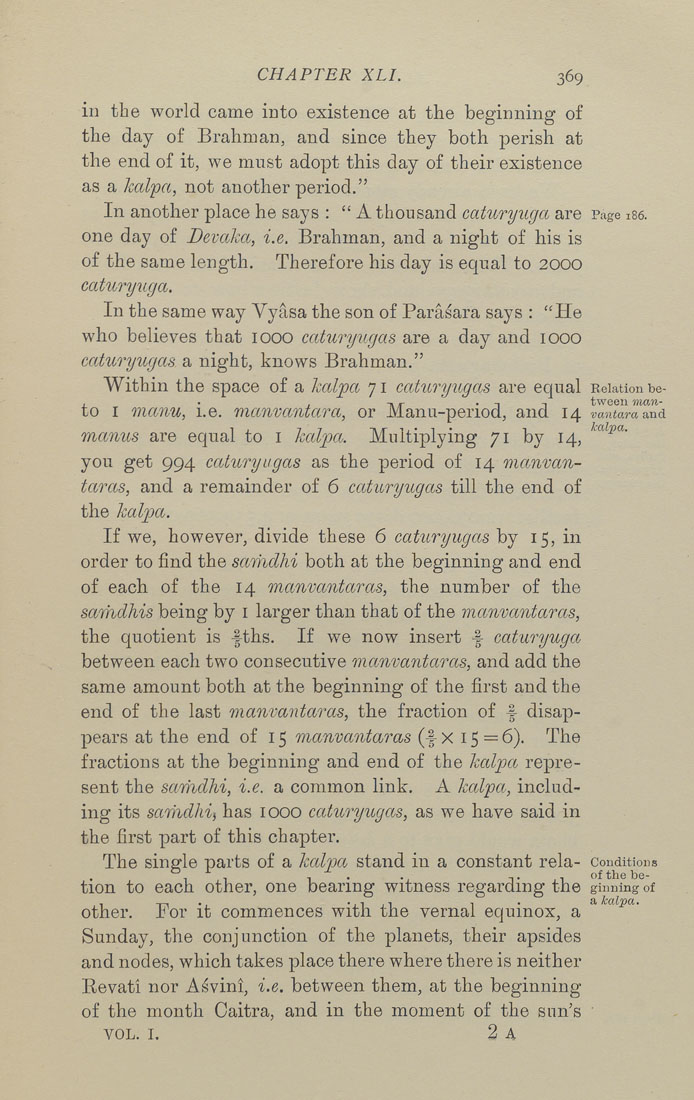Bīrūnī, Muḥammad ibn Aḥmad, Alberuni's India (v. 1)
(London : Kegan Paul, Trench, Trübner & Co., 1910.)
|
||
|
|
|
|
| Page 369 |

CHAPTER XLI. 369 in the world came into existence at the beginning of the day of Brahman, and since they both perish at the end of it, we must adopt this day of their existence as a kalpa, not another period." In another place he says : " A thousand caturyuga are Page ise. one day of Devaka, i.e. Brahman, and a night of his is of the same length. Therefore his day is equal to 2000 catwyuga. In the same way Vj^asa the son of Parasara says : "He who believes that 1000 caturyugas are a day and 1000 caturyugas a night, knows Brahman." Within the space of a kalpa 71 caturyugas are equal Relation be- , • . TV ^ • T T tween man- to I manu, i.e. manvantara, or Manu-period, and 14 vantara mA manus are equal to i kalpa. Multiplying 71 by 14, '*^"' you get 994 caturyugas as the period of 14 manvan¬ taras, and a remainder of 6 caturyugas till the end of the kalpa. If we, however, divide these 6 caturyugas by 15, in order to find the sarhdhi both at the beginning and end of each of the 14 manvantaras, the number of the samdhis being by i larger than that of the manvantaras, the quotient is -fths. If we now insert -f caturyuga between each two consecutive manvantaras, and add the same amount both at the beginning of the first and the end of the last manvantaras, the fraction of f disap¬ pears at the end of 15 manvantaras (f x 15=6). The fractions at the beginning and end of the kalpa repre¬ sent the samdhi, i.e. a common link. A kalpa, includ¬ ing its samdhii has 1000 caturyugas, as we have said in the first part of this chapter. The singfle parts of a kctlpa stand in a constant rela- conditions , . 1 . ., T. , ofthebe- tlOn to each other, one bearing witness regarding the ginning of other. For it commences with the vernal equinox, a Sunday, the conjunction of the planets, their apsides and nodes, which takes place there where there is neither Eevati nor Asvini, i.e. between them, at the beginning of the month Caitra, and in the moment of the sun's VOL. I. 2 A |
| Page 369 |







